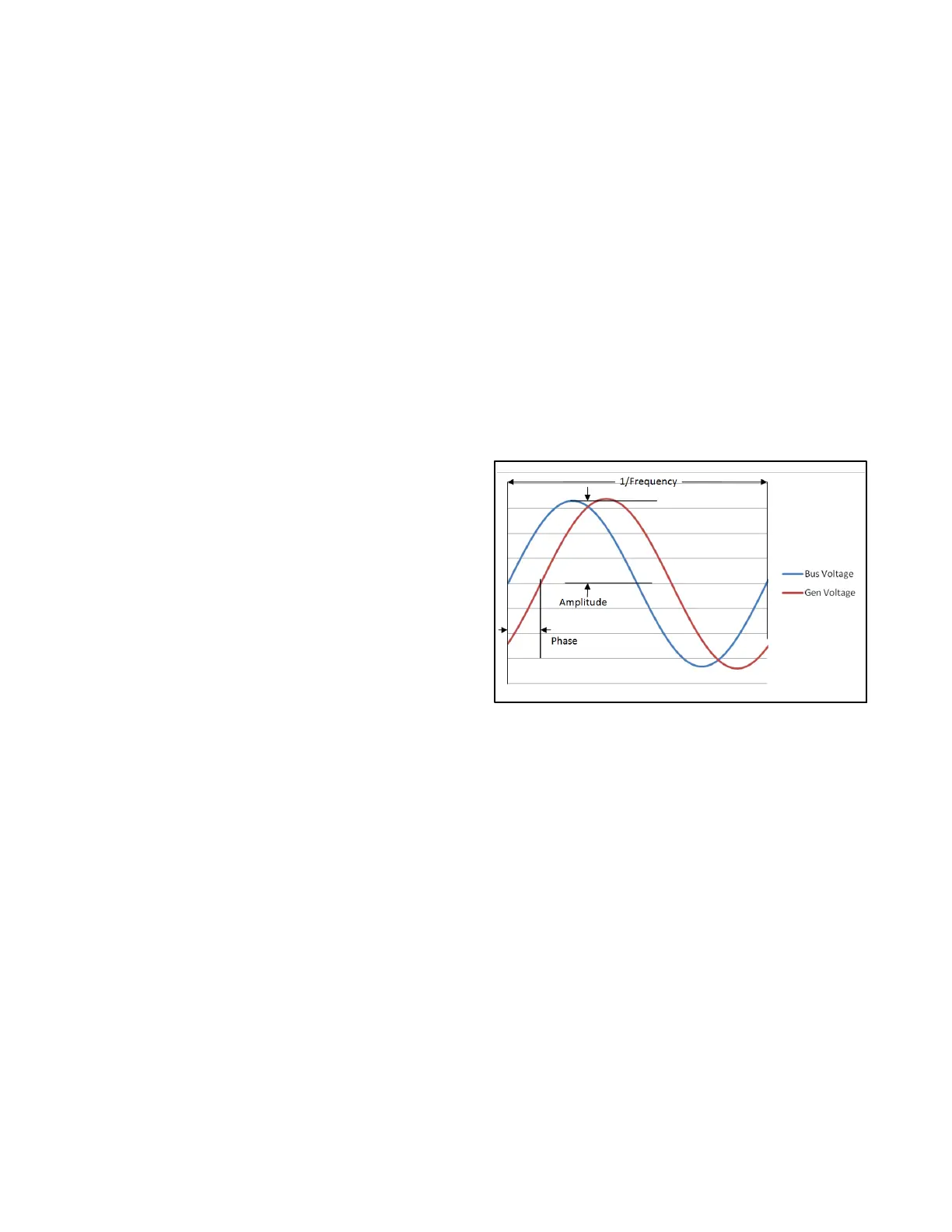207Section 12 Paralleling System InformationTP-6953 7/19
12.4.3 First-On Logic
The First-On Logic is responsible to ensure that only
one generator closes its paralleling breaker to the dead
bus. If two controllers close simultaneously, their voltage
waveforms may be out of sync with each other,
potentially resulting in damage to the equipment. After
one generator closes to the paralleling bus, the others
are able to ensure synchronism with it before closing
their breakers.
Permission Request: When a generator voltage and
frequency are considered acceptable, the controller will
broadcast a message to the PGEN network requesting
permission to close. Each of the other nodes must grant
permission to a generator controller before it will initiate
closing the circuit breaker to a dead bus.
Arbitration: If another node with higher priority (lower
node ID, determined by serial number and power-up
order) also requests permission in the same bus scan (50
ms) the first node must concede the right to close to the
higher-priority node. Each node grants permission only to
a single node, which will be the lowest node ID that it has
seen a request from. All units must grant permission to
the same node for it to be permitted to close.
Permission Receipt: If all connected PGEN nodes
have granted permission to close through a full PGEN
bus scan, a generator is permitted to close to the dead
bus and removes the trip command from the circuit
breaker (as it is safe for the breaker to close).
First-On Close Delay: The First-On Close Delay is
intended to give the trip coil on the breaker time to
retract, permitting the next close command to be
successful on breakers that have a close inhibit in place
whenthetripisactive.
Breaker Close Signal: After the First-On Close Delay
has elapsed, the breaker will be signaled to close. The
close signal is held until the breaker status indicates that
it is closed or until the fail to close time delay expires.
Fault Handling: If the breaker has a close attempt fault
(is unable to close within the Fail To Close Time Delay)
the controller will renounce its claim to first-on status.
This allows another controller to request permission to
close to the dead bus. A generator is available to close
again until the close attempts fault has expired, but will
fall in the priority order according to the node ID and will
be delayed by the reclose delay until it is available to
close again (which will allow several other nodes to try to
close to the dead bus).
After the generator controller has attempted to close the
circuit breaker for the number of close attempts, the
controller will issue a close attempts fault, indicate that it
is unavailable to the other nodes, and start the breaker
trip to shutdown time delay (default of 5 minutes). If the
time delay expires without t he fault being cleared, the
controller will shutdown the generator (as it is not
capable of providing power t o the customer with the
breaker open, so there is no reason to remain running).
The circuit breaker fault can be reset by sending a
remote reset command through Modbus or SiteTech t,
by stopping the controller and pressing OFF a second
time, or by pressing the AUTO button while the controller
is already in ’Auto’ mode.
12.4.4 Synchronizing
Synchronizing is the process by which the output of a
generator is matched to the output of a paralleling bus.
SeeFigure12-1.
Figure 12-1 Synchronizing Amplitude, Frequency,
and Phase
Because the generator voltage and the paralleling bus
voltage are AC signals, they have to match in three
quantities in order to be identical, amplitude, frequency,
and phase. The controller adjusts the voltage regulator
target and engine speed to match the generator and bus
voltage in all three quantities.
Frequency Match: The synchronizer matches
frequency before attempting t o match voltage or phase.
The phase angle varies at a rate that is related to the
difference in frequency, hence it is difficult to control
phase if the frequency is dramatically different.

